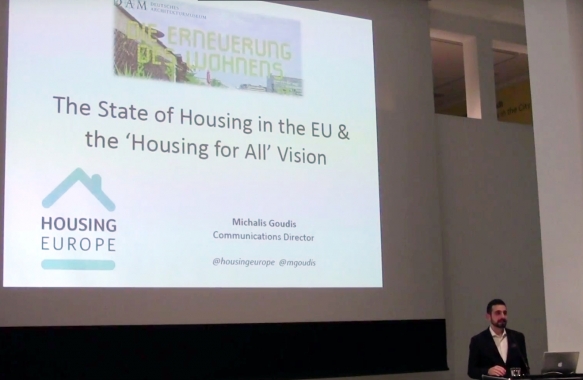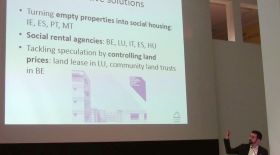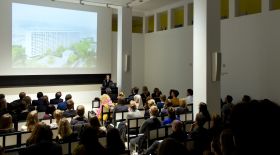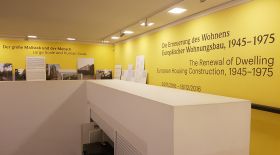The Renewal of the Dwelling
What can we learn from the European Housing Construction between 1945 and 1975?
Frankfurt, 2 December 2016 | Published in Urban
Housing Europe contributed to the International Conference under the ‘Renewal of the Dwelling: European Housing Construction 1945-1975’ that took place at the German Architecture Museum (DAM) in Frankfurt on November 24th and 25th. Housing Europe Communications Director, Michalis Goudis delivered the keynote speech triggering an exchange around the social and political dimension of affordable housing today with an audience of renowned architects, academics, students and architectural researchers.
Most of the existing housing in Europe was constructed between 1945 and 1975. This is due to both the rebuilding of Europe after the destructions of the Second World War and the economic boom that began in the later 1950s. Public funding played a particular role during this brief historical phase. The state or state subsidized institutions had to address the great shortage of housing and at the same time had a unique opportunity to realize their housing policy ideals.
The conference ‘The Renewal of Dwelling’, organized by Dr. Elli Mosayebi, Professor of Housing and Design at the Technical University of Darmstadt and hosted by the German Architecture Museum in Frankfurt, initiated a journey through time to explore the evolution of subsidized construction of apartment buildings in Europe, the standards, the conventions and norms as well as the search for new forms of housing, innovative possibilities of technology and construction, and alternative aesthetic ideals.
The first day presented various Public Housing Initiatives ranging from the success story of the Cooperatives in post-war Norway to the SAAL housing process which has been the legacy of the 1974 Portuguese Revolution but also from the role of social housing in the reconstruction of Lyon to the work of the London County Council in the ’50s.
Housing Europe Communications Director, Michalis Goudis delivered the keynote of the day under the title ‘The State of Housing in the EU today and the “Housing for All” vision’. Michalis presented the key finding of the ‘State of Housing in the EU 2015’ report, putting some data on the table that filled to a certain extend the lack of research around the housing sector that the first panel had identified. Making the connection with the Brussels scene but also with initiatives across Europe, Michalis focused on the issue of investing in quality housing to avoid the significant costs of inadequate housing. Michalis concluded his presentation briefly sharing a snapshot of the ‘Housing for All’ campaign urging also architects to build on what works, so that the sector can deliver addressing the pressing and changing needs of people.
The second day was dedicated to a number of Architectural Case Studies highlighting the work of legendary architects such as Oswald Mathias Ungers in Cologne, Drago Falic in Zagreb but also the work of Aris Konstantinidis for Greek Social Housing Organisation from 1955 to 1957. The city of Brussels was as well in the epicentre with a presentation around ‘The Struggle between Public and Private Initiatives for Housing Construction in the Capital of Europe’.
An accompanying exhibition under the same title was also inaugurated on November 24th (will be running at DAM until 18 December) presenting for the first time the results of the research seminar “Wohnen in Europa” (Housing in Europe) by architecture students of the chair of housing and design at TU Darmstadt. The project focuses on some 70 architecturally outstanding but internationally little known apartment buildings in Brussels, Zagreb, Cologne, Oslo, Porto, Lyon and Athens.




